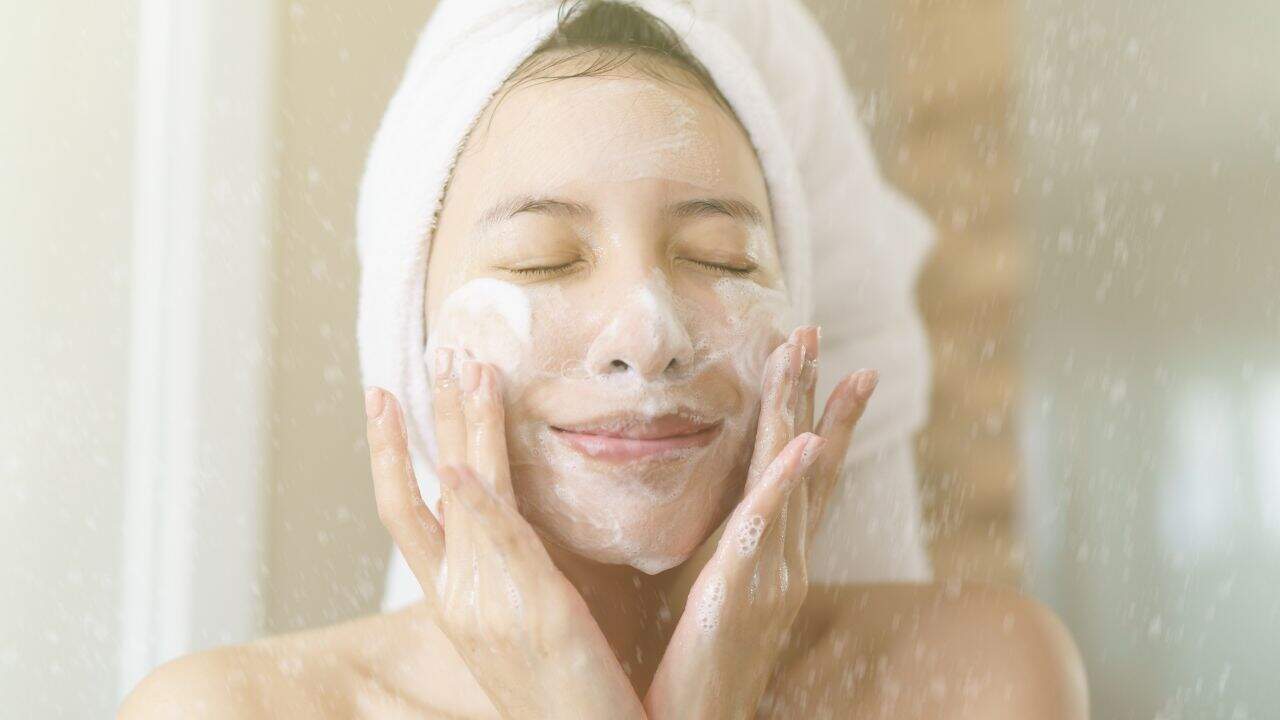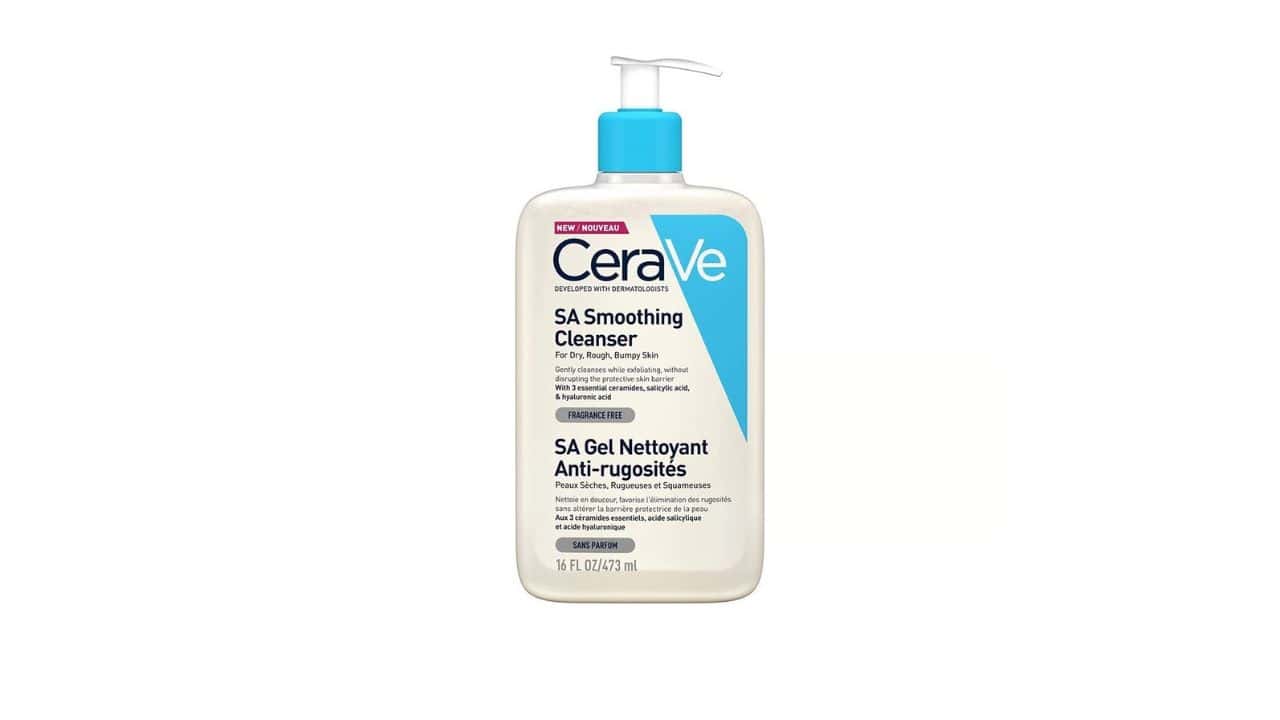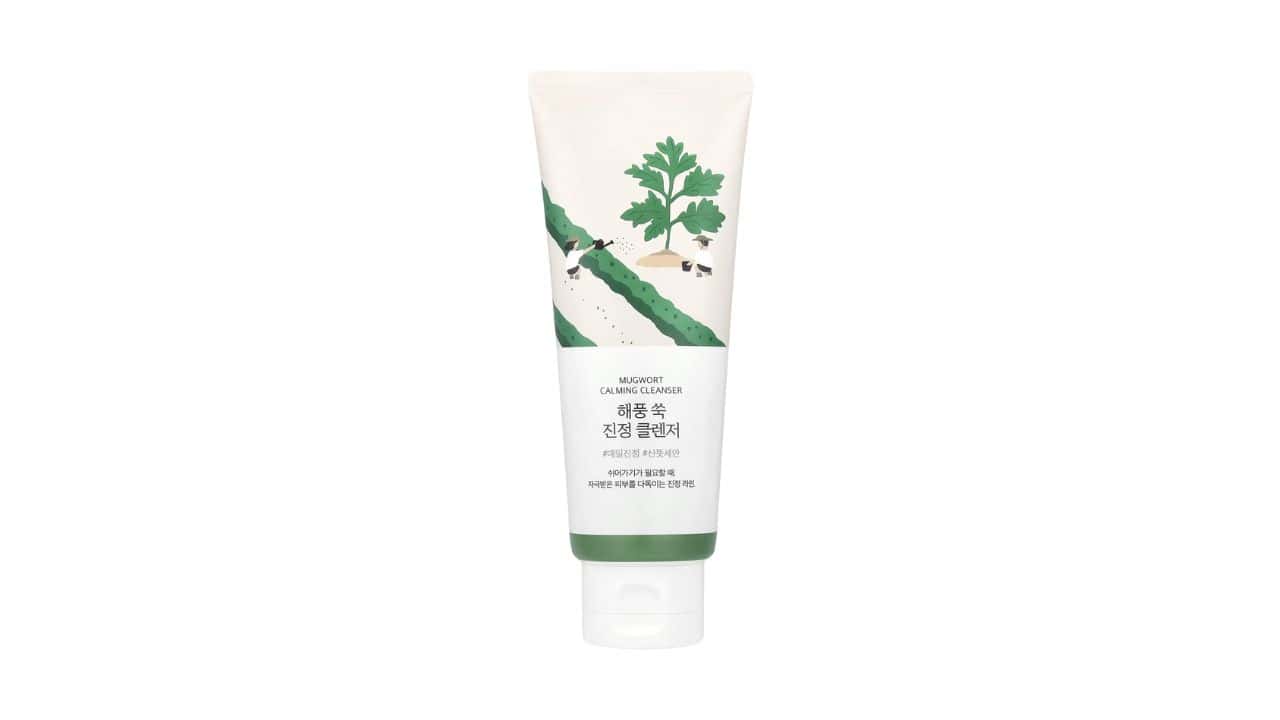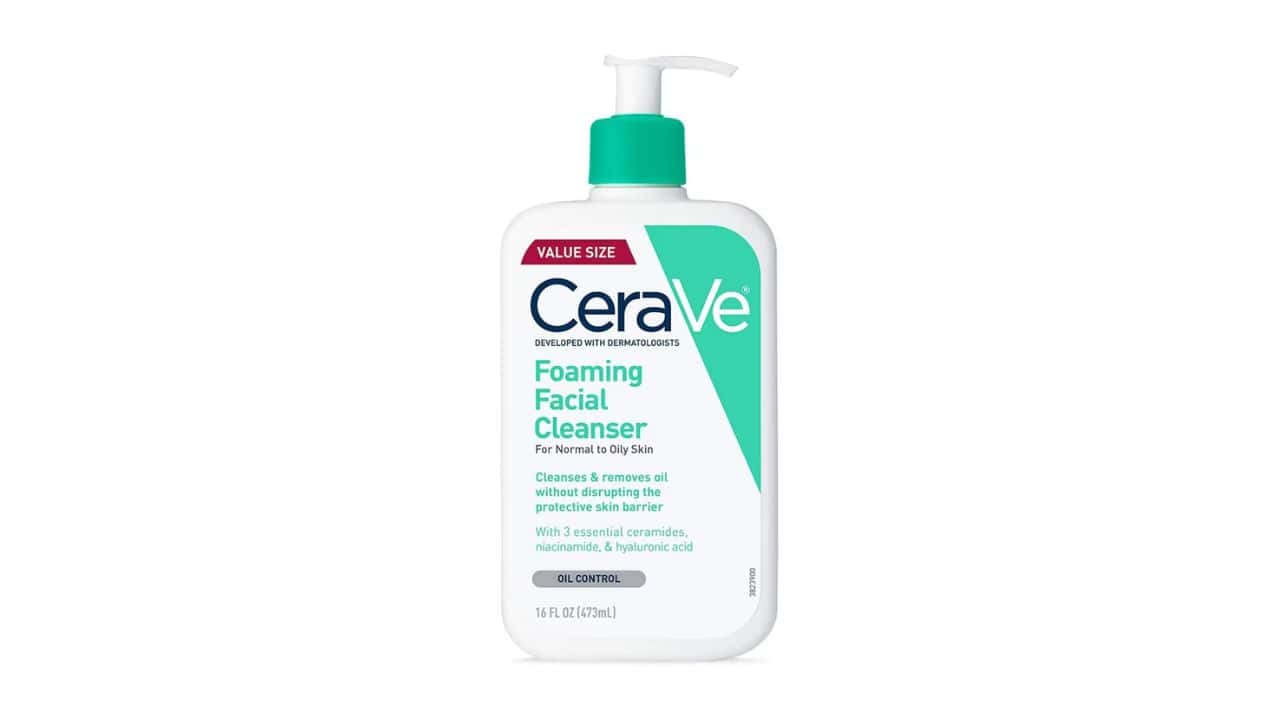How to Use Face Cleanser for Clear, Fresh Skin: Your Step-by-Step Guide

Think face washing is just a quick splash, scrub, and rinse? Think again. This seemingly simple step is where most skincare routines fall apart. Using the wrong cleanser, scrubbing too aggressively, or rushing through the process can leave your skin feeling tight, irritated, or prone to stubborn breakouts.
Here’s what most people don’t realize: mastering your cleansing routine is the secret to unlocking your skin’s potential. With a few strategic adjustments, you can transform dull, problematic skin into a clear, balanced canvas that’s perfectly primed for your favorite serums and moisturizers.
Ready to discover what proper cleansing can do for your complexion? Let’s dive into the science-backed techniques that will revolutionize your skincare routine.
Why Proper Cleansing is Your Skin’s Best Friend
Your face endures a daily assault of environmental aggressors. Throughout the day, it collects a cocktail of makeup residue, sunscreen, air pollution, excess sebum, dead skin cells, and bacteria. When these impurities aren’t properly removed, your skin pays the price.
The Hidden Consequences of Poor Cleansing
Clogged pores become breeding grounds for blackheads, whiteheads, and inflammatory acne. That mixture of oil, debris, and dead skin creates the perfect storm for breakouts that seem to appear overnight.
Your complexion loses its natural radiance when accumulated grime prevents light from reflecting evenly off your skin’s surface. This buildup creates a dull, uneven appearance that no amount of highlighter can fix.
Even the most expensive skincare products become ineffective when applied to improperly cleansed skin. It’s like trying to paint over dirt – your serums and treatments simply can’t penetrate through the barrier of leftover residue.
Perhaps most frustrating of all, harsh or inadequate cleansing disrupts your skin’s protective barrier, leading to increased sensitivity, dryness, and compensatory oil production. Your skin starts working against itself instead of maintaining its natural balance.
Decoding Cleanser Types: Finding Your Perfect Match
The beauty aisle’s endless array of cleansing options can feel overwhelming, but understanding the science behind each formula makes choosing much simpler.
Gel Cleansers: The Deep Clean Champions
These lightweight, jelly-textured formulas excel at cutting through oil and impurities without leaving residue. Their clear consistency often contains purifying ingredients like salicylic acid or tea tree oil. Gel cleansers work particularly well for normal to oily skin types that need thorough cleansing without heavy moisture.
Foaming Cleansers: Bubbles That Mean Business
When activated with water, these cleansers create rich, satisfying lather that effectively sweeps away excess oil and daily grime. The foaming action helps lift impurities from pores, making them ideal for combination and oily skin types. However, those with sensitive or dry skin should approach with caution, as some foaming agents can be overly drying.
Cream and Milk Cleansers: Gentle Nourishment
Rich, non-foaming formulas prioritize comfort and hydration while still removing impurities effectively. These cleansers often contain nourishing oils and emollients that maintain the skin’s moisture barrier during cleansing. Perfect for dry, sensitive, or mature skin that needs gentle care.
Oil Cleansers and Cleansing Balms: The Makeup Melters
Based on the principle that “like dissolves like,” these oil-based formulas effortlessly dissolve stubborn makeup, waterproof mascara, and SPF without harsh rubbing. Contrary to popular belief, oil cleansers won’t clog pores or make oily skin worse – they’re actually excellent first-step cleansers for all skin types.
Micellar Water: The No-Rinse Wonder
Tiny oil molecules called micelles act like magnets, attracting and lifting away dirt, oil, and makeup without requiring water or harsh rubbing. While convenient for travel or quick touch-ups, micellar water works best as a preliminary step rather than your only cleansing method.
Clay Cleansers: Purifying Powerhouses
Infused with mineral-rich clays like kaolin or bentonite, these cleansers draw out impurities and absorb excess oil from deep within pores. They provide an intensive, purifying cleanse that leaves skin feeling refreshed and shine-free. Best suited for oily and acne-prone skin types.
Choosing Your Cleanser: A Personalized Approach
Selecting the right cleanser isn’t about following trends – it’s about understanding your skin’s unique needs and responding accordingly.
For Oily Skin: Control Without Stripping
Look for lightweight gel or foaming formulations that can cut through excess sebum without triggering rebound oil production. Salicylic acid helps keep pores clear, while niacinamide reduces oil production and soothes inflammation. Tea tree oil provides natural antibacterial benefits.

Product spotlight: CeraVe SA Smoothing Cleanser combines gentle exfoliation with oil control, helping prevent breakouts while maintaining skin comfort.
For Dry Skin: Hydration-First Cleansing
Creamy, milk-based, or non-foaming formulas should be your go-to choices. Seek out ceramides for barrier repair, glycerin and hyaluronic acid for moisture retention, and squalane for gentle nourishment. These ingredients cleanse effectively while preserving your skin’s precious moisture.
Product spotlight: La Roche-Posay Toleriane Hydrating Gentle Cleanser delivers gentle cleansing with glycerin-powered hydration that leaves skin soft and comfortable.
For Sensitive Skin: Minimal and Mindful
Fragrance-free, soap-free formulas with minimal ingredient lists are essential. Look for soothing agents like chamomile, aloe vera, colloidal oatmeal, or allantoin. pH-balanced cleansers help maintain your skin’s natural protective acid mantle.

Product spotlight: Round Lab Mugwort Calming Cleanser features a low-pH formula with mugwort extract that soothes while cleansing, free from harsh surfactants that could trigger reactions.
For Combination Skin: Balance is Key
Mild gel or light foaming cleansers work best, providing enough cleansing power for oily areas without over-drying the rest of your face. Niacinamide helps balance oil production, hyaluronic acid maintains hydration, and ceramides strengthen the overall skin barrier.

Product spotlight: CeraVe Foaming Cleanser offers the perfect balance with ceramides, niacinamide, and hyaluronic acid working together to address combination skin’s dual needs.
Master the Technique: Your Step-by-Step Cleansing Ritual
Proper cleansing is as much about technique as it is about product selection. Follow these professional steps for optimal results.
Step 1: Start with Clean Hands
This might seem obvious, but it’s the most overlooked step. Your hands collect bacteria, oils, and debris from everything you touch throughout the day. A quick 20-second wash with soap and water ensures you’re not transferring germs directly to your freshly cleansed face.
Step 2: Remove the Day’s Layers
If you wear makeup or sunscreen (and you should be wearing SPF daily!), your regular cleanser needs backup. Use micellar water, a cleansing balm, or oil-based cleanser to break down these stubborn products first. This preliminary step ensures your main cleanser can focus on skin-level impurities rather than struggling with makeup residue.
Step 3: Temperature Matters
Lukewarm water is your sweet spot – hot enough to help loosen dirt and oil, but not so hot that it strips your skin’s natural protective oils or causes irritation. Think comfortably warm, not steamy.
Step 4: Less is More with Product Amount
A dime-sized amount of gel or foaming cleanser typically suffices for your entire face. Cream cleansers might require a nickel-sized dollop. Using too much product can leave residue or over-dry your skin, while too little won’t cleanse effectively.
Step 5: The Art of Gentle Massage
Apply your cleanser to damp skin and massage using gentle, circular motions with your fingertips for at least 60 seconds. This gives the cleanser time to break down impurities and allows for better penetration. Pay extra attention to your T-zone where oil tends to accumulate, but don’t forget often-missed areas like your hairline, jawline, and neck.
Step 6: Rinse Until Squeaky Clean (But Not Tight)
Thoroughly rinse away every trace of cleanser using lukewarm water. Leftover product residue is a major cause of clogged pores and irritation. Your skin should feel clean but not tight or stripped when you’re finished.
Avoid These Cleansing Pitfalls
Even with the best intentions, these common mistakes can sabotage your cleansing efforts:
- The Overwashing Trap: More isn’t always better. Cleansing more than twice daily (morning and evening, plus after intense workouts) can disrupt your skin’s natural balance, leading to either excessive dryness or rebound oil production.
- Skipping Morning Cleansing: Even overnight, your skin accumulates natural oils, dead skin cells, and bacteria from your pillowcase. A gentle morning cleanse removes this buildup and creates the perfect base for your daytime skincare and SPF application.
- The Dirty Towel Dilemma: Reusing the same face towel for days or sleeping on dirty pillowcases introduces bacteria that can cause breakouts. Use a fresh face towel every 1-2 days and change pillowcases at least weekly – more often if you’re acne-prone.
- Single Cleansing When Double is Needed: If you wear makeup, heavy sunscreen, or have particularly oily skin, one cleansing step often isn’t enough. Double cleansing with an oil-based first step followed by your regular cleanser ensures complete removal of all impurities.
- Using the Wrong Formula: A harsh foaming cleanser can devastate dry skin, while a rich cream cleanser might not adequately address oily skin’s needs. Your cleanser should match your skin type and can change with seasons, hormones, or age.
Master the Foundation of Great Skin
Remember that consistency trumps perfection. It’s better to maintain a gentle, appropriate cleansing routine daily than to over-cleanse sporadically. Your skin thrives on predictable, nurturing care that respects its natural processes while effectively removing the impurities that can cause problems.
While mastering proper cleansing technique is essential, having access to high-quality, professionally formulated cleansers ensures you can achieve the clear, balanced results you’re working toward. With countless skincare brands and formulations available, finding trusted, effective products that deliver the gentle yet thorough cleansing your skin deserves can feel overwhelming.
Discover your perfect cleansing routine at Beautinow – your trusted destination for authentic, premium skincare products that deliver professional-quality results and help you master the foundation of great skin with confidence.
Why choose Beautinow for your cleansing essentials:
- Curated selection of authentic skincare products from dermatologist-recommended and luxury brands
- High-performance formulations with gentle yet effective cleansing power for every skin type
- Specialized cleansers for every need, from oil-based makeup removers to pH-balanced sensitive skin formulas
- Detailed usage guides and skincare routines for maximizing your cleansing results
- Expert skincare advice and personalized product recommendations based on your skin type and concerns
Your skin deserves the superior quality and gentle effectiveness that only comes from professionally formulated, dermatologist-tested cleansers designed to respect your skin’s natural barrier while removing impurities completely. Experience the difference that authentic, professional-grade skincare can make with Beautinow’s expertly curated collection of cleansing essentials – including trusted favorites like CeraVe Foaming Facial Cleanser, La Roche-Posay Toleriane Caring Wash, and Tatcha The Rice Wash.
Frequently Asked Questions
Q: Is face wash the same as cleanser?
A: While the terms are often used interchangeably, there are subtle differences. “Face wash” typically refers to foaming or gel-based cleansers that require rinsing with water, while “cleanser” is a broader term that encompasses all facial cleansing products – including cream cleansers, oil cleansers, micellar water, and cleansing balms. Both serve the same fundamental purpose of removing dirt, oil, and impurities from your skin, but the specific formulation and application method may vary.
Q: Can cleanser be used daily?
A: Absolutely! In fact, daily cleansing is essential for maintaining healthy skin. Most people should cleanse twice daily – once in the morning to remove overnight oil buildup and prepare skin for daytime products, and once in the evening to remove makeup, sunscreen, and daily accumulation of dirt and pollutants. However, if you have extremely sensitive or dry skin, you might benefit from cleansing only once daily (preferably in the evening) and using just water or a gentle micellar water in the morning.
Q: Can I use soap and cleanser at the same time?
A: It’s not recommended to use traditional bar soap and facial cleanser together, as this combination can be overly harsh and disruptive to your skin’s natural barrier. Bar soaps typically have a high pH that can strip your skin’s protective acid mantle, while facial cleansers are specifically formulated to maintain your skin’s optimal pH balance. If you’re double cleansing (which is beneficial for removing makeup and sunscreen), use an oil-based cleanser first, followed by your regular facial cleanser – not soap. This combination provides thorough cleansing without compromising your skin’s health.

